Exploring the Benefits of Wind Farm Repowering
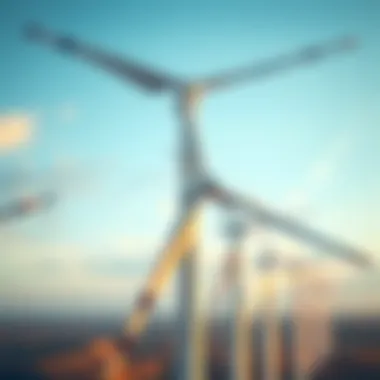
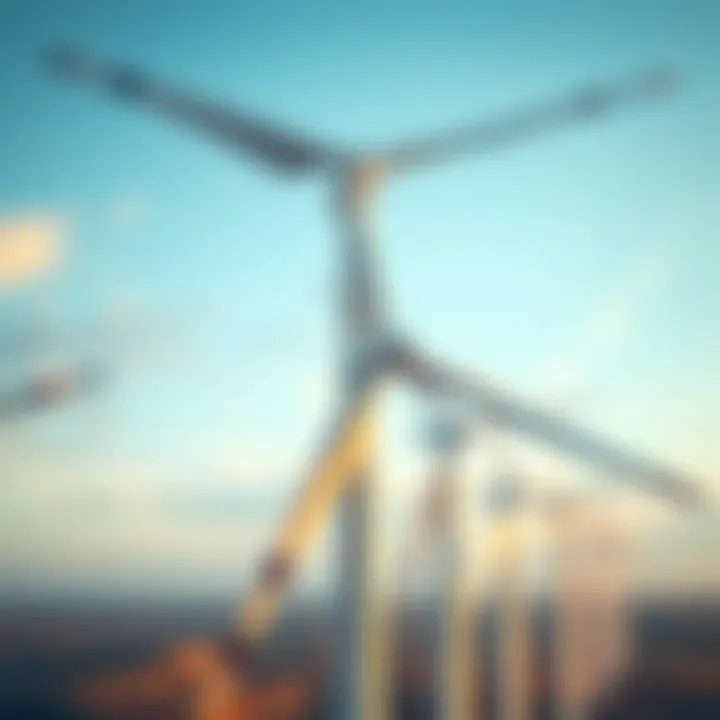
Article Overview
Purpose of the Article
This article aims to explore the pivotal role of wind farm repowering, a process that synthesizes the need for efficiency with technological advancement in the renewable energy sector. With existing wind farms facing the limitations of aging equipment and evolving technology, repowering offers not just a chance to optimize energy production but also to address environmental concerns and regulatory challenges. By diving deep into the motivations fueling repowering, the article serves as a road map for stakeholders, aiding them in navigating the complexities of modern wind energy optimization.
Relevance to Multiple Disciplines
Understanding wind farm repowering extends beyond just renewable energy specialists; it reaches into various fields, including environmental science, engineering, economics, and community planning. Those in academia will find dimensions of interest in the sustainability outcomes, while professionals in engineering can illustrate how new technologies can enhance existing infrastructures. Economists may analyze the cost-benefits associated with repowering, whereas community planners will be keen on how these projects affect local environments and economies. All these angles combine to illustrate the multifaceted nature of repowering within the broader context of sustainable development.
Research Background
Historical Context
The journey of wind energy can be traced back centuries, with its roots found in ancient civilizations harnessing wind power for sailing and milling. However, the modern wind energy industry began its robust development in the late 20th century. The push for renewable energy sources gave rise to large-scale wind farms, particularly in areas with favorable wind conditions. Yet, as time went on, many of these installations required updates due to technological advancements and the challenges posed by changing climates and regulatory environments. Repowering thus emerged as a strategic solution to extend the operational life of aging farms and significantly increase their energy output.
Key Concepts and Definitions
Before delving deeper into repowering, it's essential to define some crucial terms:
- Repowering: Refers to the process of upgrading or replacing existing wind turbines with newer, more efficient models, while sometimes making additional modifications to the infrastructure of the wind farm itself.
- Capacity Factor: This term measures the actual output of a wind farm as a percentage of its potential output over a given time period, which often improves after repowering.
- Feed-in Tariffs: A policy mechanism encouraging the investment in renewable energy by providing a fixed payment for energy produced, applicable in many regions.
Witnessing the transformation brought by meticulous repowering efforts not only enhances energy production capabilities but also draws attention to the potential environmental impacts posed by older, less efficient systems. This paper will unfold these concepts, guiding stakeholders through a comprehensive overview of wind farm repowering, enriched with analytical insights and real-world case studies.
Foreword to Wind Farm Repowering
Wind farm repowering is crucial in the evolving landscape of renewable energy, primarily as it offers solutions to optimize existing wind energy systems. The idea is simple: rather than establishing new wind farms from scratch, stakeholders can enhance the performance of aging installations, bringing them up to modern standards and extending their useful lives. These upgrades may involve replacing old turbines with more advanced and efficient models or retrofitting existing hardware with cutting-edge technology.
Benefits of Wind Farm Repowering:
- Increased Energy Production: More powerful turbines can generate significantly more electricity, maximizing the potential output from resources already committed to the infrastructure.
- Cost Efficiency: Updating turbines can be more economical than the costs associated with building new facilities. This economic advantage is compounded when considering the operational efficiencies of new technology.
- Sustainability and Reduced Footprint: By enhancing existing sites rather than developing new locations, repowering minimizes environmental disruption, helping preserve natural habitats while still promoting renewable energy.
When exploring these themes in the following sections, it becomes clear that understanding wind farm repowering is not only about the mechanics of energy production but also involves a broader discussion around economic, environmental, and community impact. A well-planned repowering initiative can address critical factors like technological advancements and local engagement, ensuring that all parties involved are taken into account.
As we delve deeper into the topic, the importance of a historical perspective becomes evident. Tracing the development of wind technology helps illuminate how we've arrived at this pivotal moment in renewable energy.
"In renewable energy, progress often relies on our past. Repowering allows us to harness the old to bring about the new."
"In renewable energy, progress often relies on our past. Repowering allows us to harness the old to bring about the new."
This exploration sets the stage for a comprehensive view of what repowering truly embodies and how it can possibly shape the future of energy production.
Rationale Behind Repowering
Wind farm repowering has gained traction in recent years as a strategy to revitalize existing wind farms and boost their overall performance. The significance of this topic cannot be overstated, as it holds the key to maximizing wind energy potential while simultaneously addressing broader economic, technological, and environmental concerns. In essence, repowering serves not only as a means to upgrade aging infrastructure but also as a proactive response to the evolving landscape of renewable energy demands.
Increasing Energy Output and Efficiency
The primary driver behind repowering is the urgent need to increase energy output and efficiency. Older wind turbines, while revolutionary in their time, often struggle to keep pace with the advancements in turbine technology. By replacing these antiquated systems with newer models boasting larger rotor diameters and improved aerodynamics, wind farms can generate significantly more energy. For instance, a recent case study conducted in California demonstrated that repowering a 100 MW facility could lead to a 20% increase in energy production annually.
Moreover, modern turbine designs come equipped with advanced control systems that optimize performance in varying wind conditions. This means that instead of running at suboptimal levels, the new turbines adjust their operations dynamically, squeezing every last drop of energy out of the wind. Consequently, not only does repowering improve the energy output, but it also contributes to a more stable and reliable energy supply, essential in meeting increasing demand.
Addressing Technological Obsolescence
Another critical aspect of repowering addresses the issue of technological obsolescence. The renewable energy sector is advancing at a breakneck pace, and wind energy technology has evolved substantially over the past few decades. Older turbines lack the efficiency, capacity, and features that newer models provide. They are not just less efficient; they are also often plagued by maintenance issues and reduced reliability.
A stark example comes from a wind farm in Texas, where operators decided to repower after observing that their existing turbines were, on average, generating 30% less energy than their newer counterparts. This stark discrepancy underscores the necessity for regular upgrades to avoid falling behind and to remain competitive in the energy market. Repowering mitigates the risks associated with aging technology by integrating state-of-the-art components that are more resilient and easier to maintain.
Enhancing Economic Viability
Lastly, repowering enhances the economic viability of wind energy projects. The initial investment can seem hefty; however, the long-term savings are undeniably attractive. Newer turbines not only produce more energy but also consume less for operations, drastically reducing maintenance costs. For investors and stakeholders, this means a quicker return on investment.
Furthermore, repowering can open the door to new financial models and funding opportunities. Governments and financial institutions are increasingly supporting renewable energy initiatives through grants, tax incentives, and favorable loan terms. By demonstrating a commitment to sustainable energy practices through repowering, stakeholders may access these benefits, further improving the economic landscape of wind energy projects.
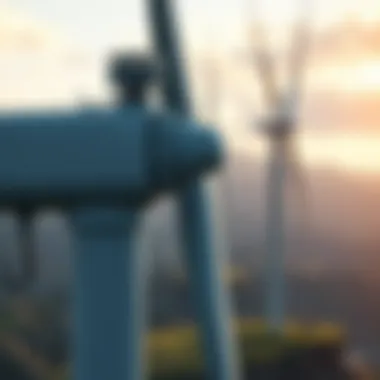
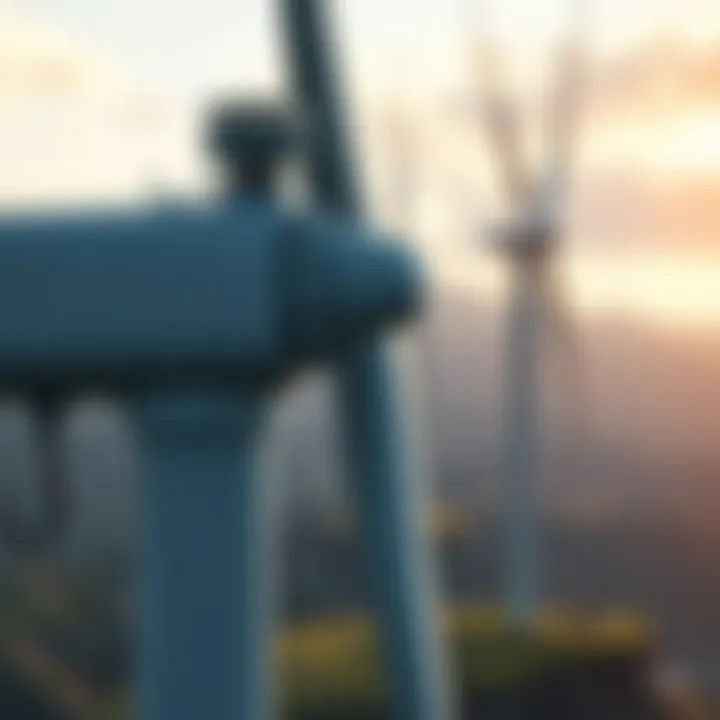
Repowering is not just about upgrading technology; it's about fostering a sustainable future that thrives on innovation and efficiency.
Repowering is not just about upgrading technology; it's about fostering a sustainable future that thrives on innovation and efficiency.
Technological Advances in Repowering
Technological advancements play a vital role in the repowering of wind farms, ensuring that these installations not only meet current energy demands but also push the envelope of what’s possible in renewable energy production. As the renewable sector evolves, the integration of new technologies helps to boost the efficiency, output, and sustainability of existing wind energy systems. Repowering is not merely a refresh of old machinery; it’s about effectively tying in cutting-edge technologies that enhance overall performance and lower costs.
Latest Turbine Technologies
The heart of any wind farm is its turbines. The latest turbine technologies mark a significant departure from earlier designs, focusing on maximizing energy capture and minimizing environmental impact.
For instance, taller towers and longer blades allow modern turbines to harness stronger and more consistent winds, particularly in areas previously deemed unviable. These advanced turbines can produce more energy at lower wind speeds, thus extending the operational hours per day. Model like the Siemens Gamesa SG 14-222 DD is an excellent example, showcasing how innovation leads to improved capacity while directly addressing environmental concerns through reduced land usage.
Moreover, turbine design has increasingly centered on enhancing durability and minimizing maintenance needs. This is crucial as maintenance often represents a considerable portion of operational costs. With smarter sensors and advanced materials being integrated, turbines are getting better at self-diagnosing issues, which allows for proactive maintenance—or, in some cases, self-repair capabilities. This leads not only to increased efficiency but also ensures longer life cycles for the turbines themselves, thus offering better returns on initial investments.
Innovations in Energy Storage Solutions
One of the challenges that wind energy faces is its intermittent nature. Wind doesn’t always blow when demand peaks, which is where innovations in energy storage come into play. Integrating storage solutions with wind farms is becoming increasingly common, providing a buffer to mitigate energy fluctuations.
Current advancements in battery technologies, particularly lithium-ion and flow batteries, have made it possible to store surplus energy generated during high winds and release it during low production periods. This capability enhances the stability of the energy supply and can even lead to cost savings.
More exciting are the developments in pumped hydro storage and mechanical storage systems, which can be scalable to large energy demands. These technologies enable a more agile energy market, capable of adapting to sudden changes in demand or supply. The potential of integrating energy storage with wind power can reshape grid management, granting operators greater control over energy distribution and reliability.
Smart Grid Integration
The landscape of energy generation and distribution has become increasingly complex, resulting in a pressing need for smart grid technology integration in wind farm operations. Smart grids leverage advanced communication and information technologies to create a more efficient, reliable, and environmentally friendly energy system.
With smart grid capabilities, wind farms can respond dynamically to changes in energy demand and supply. For instance, real-time data collection allows operators to predict energy output based on wind conditions, making for more informed decision-making. This capability not just increases efficiency but supports grid stability significantly, particularly during peak demand periods.
The challenge and beauty of this integration lie in its ability to connect various energy resources—solar, hydro, and other renewables—into a cohesive package. When a wind farm is part of a smart grid, it can effectively communicate with other sources and adapt to the larger energy ecosystem, leading to optimal resource utilization. In essence, smart grid integration empowers wind farm operators to modernize their approach, cultivating a responsive, interconnected energy landscape that aligns with future energy needs.
"Technological advancements in renewable energy, particularly wind power, are not merely illuminating the path forward; they are reshaping the entire landscape of energy generation and consumption."
"Technological advancements in renewable energy, particularly wind power, are not merely illuminating the path forward; they are reshaping the entire landscape of energy generation and consumption."
Environmental Considerations in Repowering
Wind farm repowering is not merely a technical endeavor; it is a multifaceted process that has significant implications for the environment. Understanding the environmental considerations involved is crucial for comprehensively evaluating the impacts of this initiative. As the urgency for sustainable energy solutions grows, so does the responsibility to ensure that wind farm repowering harmonizes with local ecosystems and regulatory frameworks.
Impact on Local Ecosystems
Repowering initiatives can create both challenges and opportunities for local ecosystems. On one hand, there is potential disruption when new turbines are installed or when old ones are removed. The noise and physical footprint of construction activities might disturb wildlife, particularly in sensitive habitats. Birds and bats are particularly vulnerable, and this has led to increased scrutiny on how repowering projects adapt to these risks.
However, it's worth noting that repowering often includes the installation of more efficient turbines. These modern designs may actually reduce the overall land use per unit of energy produced, meaning there could be less habitat disruption in the long term. For example, taller turbine towers with longer blades can operate more efficiently in low-wind conditions, thereby generating power more effectively without encroaching on additional land.
Additionally, repowering can rejuvenate the biodiversity of an area. There are instances where decommissioned sites have been revitalized, leading to improved habitat conditions for various species. Therefore, while the immediate impact can be concerning, the long-term potential for ecological benefits cannot be overlooked.
Regulatory Compliance and Environmental Assessments
Navigating the regulatory landscape is paramount during repowering initiatives. Various environmental assessments are mandated to ensure that projects adhere to local, state, and federal regulations. These assessments typically focus on determining the potential impacts of construction and operation on the environment. Missing the mark here can lead to delays, increased costs, or even cancellation of projects.
It’s essential to conduct thorough studies that encompass various environmental factors, including:
- Wildlife Impact Studies: Analyzing how the project affects local fauna and flora.
- Environmental Management Plans: Strategies to minimize negative impacts during the repowering phase.
- Public Consultation Processes: Engaging with local communities to understand concerns and expectations.
During these assessments, companies must also evaluate how well their projects align with broader environmental goals, such as reducing carbon emissions. Most regions have developed specific guidelines and regulations to evaluate how renewable projects contribute to environmental preservation.
“Failing to consider the environmental aspects of repowering can prove costly—not only for the ecosystem but for the viability of the project itself.”
“Failing to consider the environmental aspects of repowering can prove costly—not only for the ecosystem but for the viability of the project itself.”
Economic Implications of Repowering
The economic implications of repowering are vital to understanding how existing wind farms can be optimized to meet the ever-growing demand for renewable energy. By investing in upgrades, stakeholders can not only enhance energy output but also secure a more sustainable financial future. Repowering is about more than just replacing old hardware; it’s an investment strategy with potential long-term benefits, including reduced operational costs and increased energy efficiency.
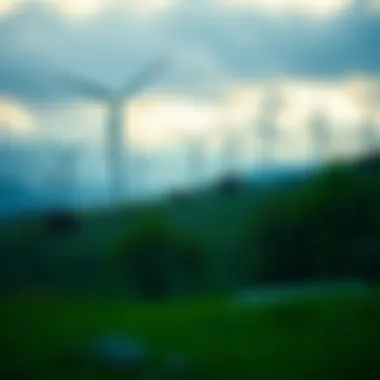
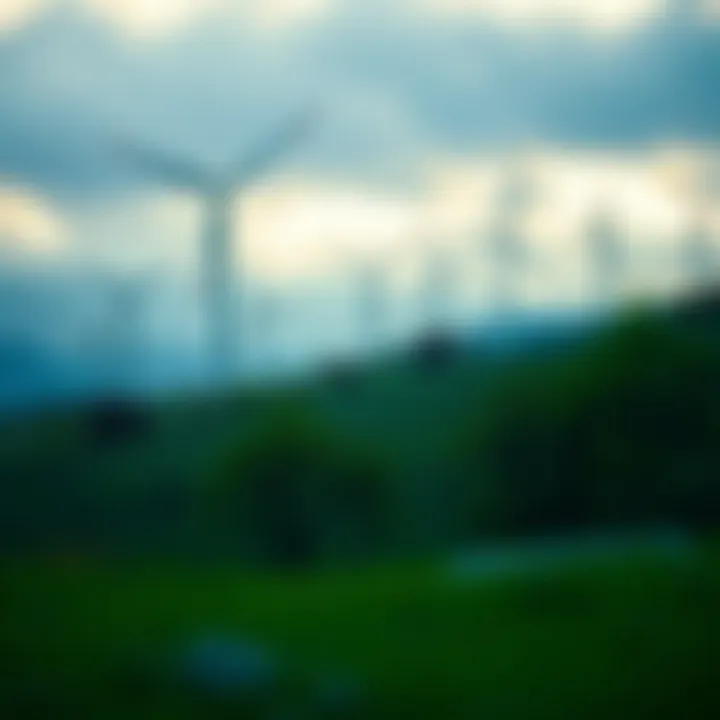
Funding and Financing Models
To make repowering initiatives effective, financial backing is essential. Various funding and financing models cater to different project scales and scopes. One prevalent model is the Public-Private Partnership (PPP), which combines public sector resources with private sector efficiency. Such partnerships can leverage governmental incentives like tax credits or grants, easing the financial burden on private investors.
In many countries, financial institutions also offer specialized loans designed specifically for renewable energy projects. For instance, the Green Loan Programs focus on sustainable practices and technologies, providing lower interest rates. Moreover, crowdfunding platforms have emerged, enabling communities to invest in local wind projects, thereby fostering a sense of ownership.
Important funding elements include:
- Grants: Offered by government and non-profit organizations to cover initial costs.
- Tax Incentives: Such as the Investment Tax Credit (ITC), allowing investors to deduct a significant percentage of the investment from their federal taxes.
- Lease Financing: An arrangement where a third party buys the equipment, and the wind farm operators lease it, minimizing upfront expenditures.
Cost-Benefit Analysis of Repowering Projects
In assessing whether a repowering project is worth pursuing, a robust cost-benefit analysis is indispensable. This method compares the financial outlay necessary for refurbishing or replacing turbines against the projected increase in energy production and operational savings. Essentially, it’s essential to scrutinize both direct costs and indirect impacts on local communities.
Benefits that can be quantified include:
- Increased Output: More efficient turbines can harness wind better, directly translating to higher electricity production.
- Lower Maintenance Costs: Newer technologies often require less upkeep and downtime, resulting in cost savings over time.
- Enhanced Energy Prices: Increased efficiency can sometimes justify higher sales prices for the energy produced, adding to overall profitability.
However, it is critical to account for potential expenses such as:
- Initial Investment: The capital outlay for new technology can be significant.
- Permitting and Regulatory Fees: Navigating the bureaucratic landscape often comes with costs that need to be factored in.
A well-crafted cost-benefit analysis should not only consider monetary factors but also the long-term impact on eco-sustainability, community acceptance, and the potential for technological advancements. One useful tool could be using software models that simulate project scenarios based on varying assumptions about costs, energy prices, and technology lifespans.
"Repowering a wind farm isn’t just about bigger and better turbines. It’s about rethinking our approach to energy and the economic viability of sustainable practices."
"Repowering a wind farm isn’t just about bigger and better turbines. It’s about rethinking our approach to energy and the economic viability of sustainable practices."
Challenges and Barriers to Repowering
Wind farm repowering carries immense potential but comes with its own set of challenges and barriers. Addressing these hurdles is essential for maximizing the benefits of existing wind energy infrastructures. This section aims to shed light on the key issues surrounding community engagement and regulatory compliance, which are critical for the success of repowering initiatives.
Community Engagement and Acceptance
Community acceptance is often the bedrock upon which sustainable energy projects stand. For wind farm repowering, engaging local communities is non-negotiable. Stakeholders must recognize that wind farms do not exist in isolation—they impact the lives of those nearby.
From reduced property values to aesthetic concerns, locals often have mixed feelings about new developments. To mitigate potential backlash, it is paramount for developers to involve the community from the outset. Here are some strategies that can foster positive engagement:
- Transparent Communication: Clearly outlining the benefits of repowering and addressing concerns early on can help build trust.
- Involvement in Decision-Making: Including community representatives in planning processes allows for local perspectives to be valued.
- Active Listening: Hosting forums or informal meet-ups can offer platforms for residents to voice their opinions and concerns.
- Demonstrating Benefits: Highlighting the positive environmental and economic impacts—like increased job opportunities and cleaner air—can shift local sentiment.
A notable example of effective community engagement is the Hornsea Project One in the U.K. Here, developer Ørsted engaged local stakeholders extensively, sharing detailed plans and incorporating feedback that ultimately led to broader acceptance.
Regulatory Hurdles and Permitting Issues
Navigating the regulatory landscape of wind farm repowering is another significant barrier. Each country and even local jurisdictions have their own set of rules and regulations, which can sometimes feel like a labyrinth. The permitting process may necessitate various assessments—environmental, safety, and social—each requiring substantial resources.
Consider the following regulatory challenges that developers might face:
- Lengthy Approval Process: The time it takes to secure all necessary permits can significantly delay projects and inflate costs.
- Changing Regulations: New laws or amendments to existing statutes can impact ongoing repowering initiatives and require additional compliance steps.
- Environmental Assessments: Thorough evaluations are often mandatory to ensure that repowering efforts do not adversely affect local wildlife or ecosystems. This can involve substantial documentation and sometimes lengthy studies.
- Intergovernmental Coordination: Projects often cross various jurisdictions, necessitating approvals from multiple agencies, which can complicate timelines.
Engagement with regulatory bodies early and often can help ease some of these challenges. For instance, establishing a proactive dialogue with agencies can often lead to quicker solutions and adjustments for complex issues. Furthermore, thorough documentation and preparedness can significantly cut down on the back-and-forth that many projects face with regulators.
"Effective engagement with the community and regulatory bodies can turn potential obstacles into collaborative opportunities for successful wind farm repowering."
"Effective engagement with the community and regulatory bodies can turn potential obstacles into collaborative opportunities for successful wind farm repowering."
In summary, while the challenges of community acceptance and regulatory compliance may seem daunting, they are manageable with the right strategies. By fostering open communication and being prepared for the regulatory maze, stakeholders can propel wind farm repowering towards greater success.
Case Studies of Successful Repowering
Case studies in wind farm repowering provide invaluable insights into the benefits and complexities inherent in upgrading existing turbines and infrastructure. The practical examples illustrate not only the viability of repowering in increasing energy output but also emphasize the broader implications on community engagement, economic factors, and environmental considerations. By examining real-world instances, stakeholders can glean insights that inform future projects, aiming for improvements based on both successes and challenges faced during the process.
Notable Examples from the United States
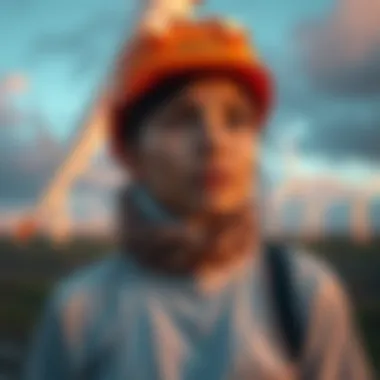
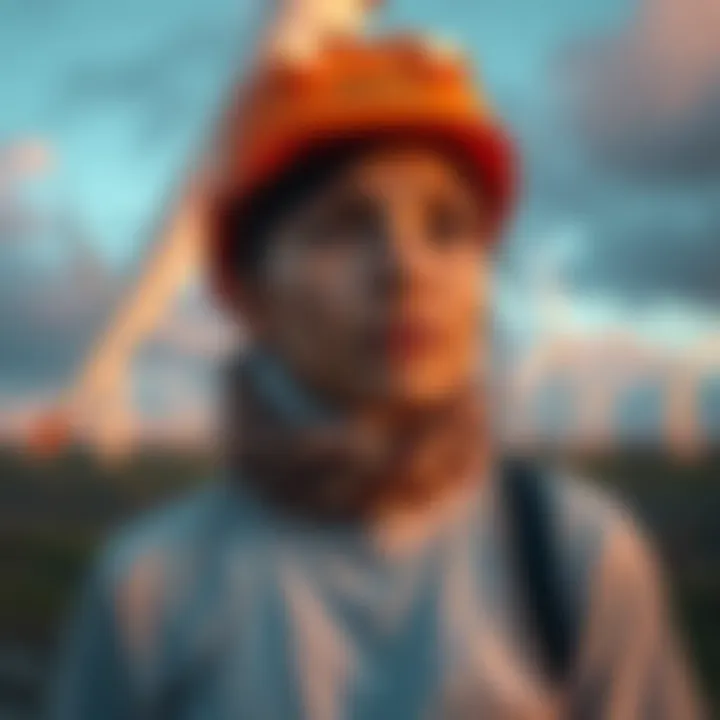
One of the standout examples of successful wind farm repowering in the United States can be seen at the Tehachapi Wind Resource Area in California. Originally constructed in the 1980s, the wind farm consisted of older, smaller turbines that produced far less energy than modern alternatives. Through repowering, many of these original turbines were replaced with larger, more efficient units that have significantly boosted the farm's overall output. Reports indicate that energy production was amplified by over 50%, thereby increasing the attractiveness of wind energy as a renewable source.
Another prominent case is the Buffalo Ridge Wind Farm in Minnesota, where older turbines were retrofitted with longer blades and newer technologies that harness the wind more efficiently. The repowered wind farm not only improved its power generation capacity but also extended its operational life—a critical consideration given the overlap of ecological concerns and economic imperatives. The overhaul not only cut operational costs but fostered community support by providing jobs during the upgrade process.
Additionally, the Shepherds Flat Wind Farm in Oregon serves as a unique case where modern technology was integrated into an existing setup, resulting in a twofold increase in capacity. The involvement of local stakeholders ensured that environmental assessments were undertaken seriously, resulting in a balanced approach to energy production that minimized negative impacts on local wildlife.
International Perspectives on Repowering
Looking internationally, the case of the Hornsea One Wind Farm off the coast of the United Kingdom demonstrates the significant potential of wind farm repowering on a grand scale. This operational site incorporates repowering strategies that not only optimize energy output but also explore advancing marine technologies. The integration of floating turbines has showcased how repowering can transcend land limitations, offering substantial output while simultaneously addressing concerns about environmental footprints—something particularly pertinent in marine ecosystems.
In Germany, the Energiewende ("energy transition") project illustrates a nationwide effort to implement repowering across numerous wind installations. Various regions have benefited from replacing outdated turbine designs with state-of-the-art technology. This initiative has led to improved efficiencies and has been embraced as a model for other nations seeking to capitalize on their existing wind energy frameworks.
"Case studies of successful repowering are crucial, not just for showcasing advancements but also for understanding the intricate balance between technology, environment, and community engagement."
"Case studies of successful repowering are crucial, not just for showcasing advancements but also for understanding the intricate balance between technology, environment, and community engagement."
Moreover, Australia's Hornsdale Wind Farm provides additional learning opportunities through its commitment to integrating energy storage solutions as part of the repowering effort. By coupling the wind farm with battery technology, they have minimized the intermittency issues often associated with renewable energy sources. This approach enhances the overall energy mix and makes wind energy more reliable, aligning with future energy security goals.
These international examples collectively underscore the versatility and adaptability of wind farm repowering as a strategic move toward meeting global renewable energy targets.
Future Trends in Wind Farm Repowering
Wind farm repowering is not just a chimera of technical improvement; it is rapidly transforming into the cornerstone of modern energy strategies across the globe. As the wind energy landscape evolves, understanding the future trends in wind farm repowering becomes essential for stakeholders aiming to boost efficiency while ensuring sustainability. This section will delve into two key aspects: emerging technologies and innovations and global market dynamics, essential for embracing the future of wind energy.
Emerging Technologies and Innovations
The horizon of wind farm repowering is brightly lit with innovative technologies, promising remarkable advancements in energy generation and storage. These innovations are not merely theoretical but have begun to shape practices in the field. One such technology includes larger and more powerful turbines, which can harness greater wind energy. For instance, next-generation turbines like the Siemens Gamesa SG 14-222 DD are designed with larger rotors, significantly increasing their energy output. The implications are profound; increasing a wind farm’s capacity without needing additional land is analogous to striking gold in energy efficiency.
Another key trend is the integration of advanced energy storage systems. Technologies such as lithium-ion batteries and flow batteries address the intermittency issues that have long plagued wind power. These systems not only store excess energy generated during peak wind activities but also release energy during calm periods, effectively stabilizing the energy supply.
Moreover, the integration of machine learning in optimizing operational efficiency can’t be overlooked. Algorithms analyze patterns and predict energy output fluctuations, allowing operators to maximize harnessed energy effectively. If you're looking to stay ahead in the industry, these technologies are one to watch closely.
"The future of wind energy lies in embracing new technologies, transforming the way we generate and consume power."
"The future of wind energy lies in embracing new technologies, transforming the way we generate and consume power."
Global Market Dynamics
As nations pivot towards sustainable energy, the economic landscape of wind farm repowering is under continuous scrutiny. The global market dynamics dictate not just investments but also policy frameworks influencing wind energy adoption. A noticeable trend is the increasing investment in renewable energy technology, spurred by governmental incentives and public awareness. For example, countries like Germany and Denmark are ramping up their investments in repowering initiatives, which helps them attain their ambitious climate goals.
Economic considerations also play a pivotal role. The decreasing costs of wind energy systems, primarily due to technological advancements and competitive markets, are making it a more attractive option compared to fossil fuels. With the levelized cost of energy (LCOE) of wind power plummeting, more stakeholders are finding it economically viable to invest in repowering projects. This affordability is leading to a ripple effect—encouraging smaller players to enter the market, thereby enriching competition and innovation.
Additionally, as countries establish their carbon neutrality targets, the market is expected to see a shift in focus towards sustainable practices. Companies that invest in repowering will not only be economically savvy but also socially responsible, thus appealing to consumers’ growing eco-consciousness.
In a nutshell, navigating these transformative trends in wind farm repowering will require both foresight and finesse from all stakeholders, positioning them for a future where wind energy dominates the global energy mix.
The End and Recommendations
In wrapping up the exploration of wind farm repowering, it is vital to underscore the significance of this practice within the broader narrative of renewable energy. Repowering is not merely about replacing old equipment with new; it’s about maximizing the potential of existing wind energy resources. This transition can significantly bolster energy output, enhance efficiency, and maintain ecological balance—all while advocating for advanced technology integration.
Repowering embodies a strategic opportunity for stakeholders to not only seize technological advancements but also to respond proactively to evolving market demands. Companies and policymakers alike must recognize that failing to adapt can lead to missed chances in a rapidly growing sector. As various studies suggest, repowering can yield substantial economic benefits, returning on investment that outweighs initial costs associated with new infrastructure. This is pivotal as societal and governmental pressure to shift to more sustainable energy practices continues to grow.
Synthesizing Key Insights
A thorough analysis of the elements surrounding wind farm repowering highlights a series of critical insights:
- Technological Advancements: The advent of more efficient turbine designs, capable of harnessing wind energy more effectively, presents a prime motivation for repowering projects.
- Environmental Stewardship: Though repowering encompasses infrastructural changes, it can also mitigate environmental impacts when planned correctly, ensuring local ecosystems are respected.
- Economic Viability: Companies can see a marked improvement in profitability when retrofitting older wind farms with new technology, addressing both efficiency concerns and market adaptability.
"Investing in repowering could be viewed not just as an upgrade, but a necessary leap into future viability."
"Investing in repowering could be viewed not just as an upgrade, but a necessary leap into future viability."
By understanding these dynamics, stakeholders can approach wind farm repowering with a well-rounded perspective, setting the stage for broader acceptance and implementation of wind energy resources.
Strategic Directions for Stakeholders
Moving forward, stakeholders in the wind energy sector—be they investors, developers, or regulatory bodies—should consider the following strategies to capitalize on the potential of repowering:
- Conduct Comprehensive Assessments: Regular evaluations of existing wind farms can pinpoint which sites are ripe for repowering, ensuring funds are invested in the most promising candidates.
- Engage with Communities: Establishing open lines of communication with local populations can foster acceptance and support, easing potential regulatory hurdles that often accompany repowering projects.
- Leverage Financial Incentives: Exploring governmental grants and subsidies dedicated to renewable energy can alleviate costs associated with extensive upgrades, making projects more feasible.
- Invest in Pilot Programs: Testing outcomes through pilot projects helps in refining strategies and demonstrating tangible results, creating a template for future endeavors in the field.
By aligning strategies with both technological insights and community priorities, stakeholders can navigate the complexities of wind farm repowering effectively. The road ahead is paved with opportunities, and it is crucial for everyone involved to adopt a forward-thinking approach that champions innovation and sustainability.



